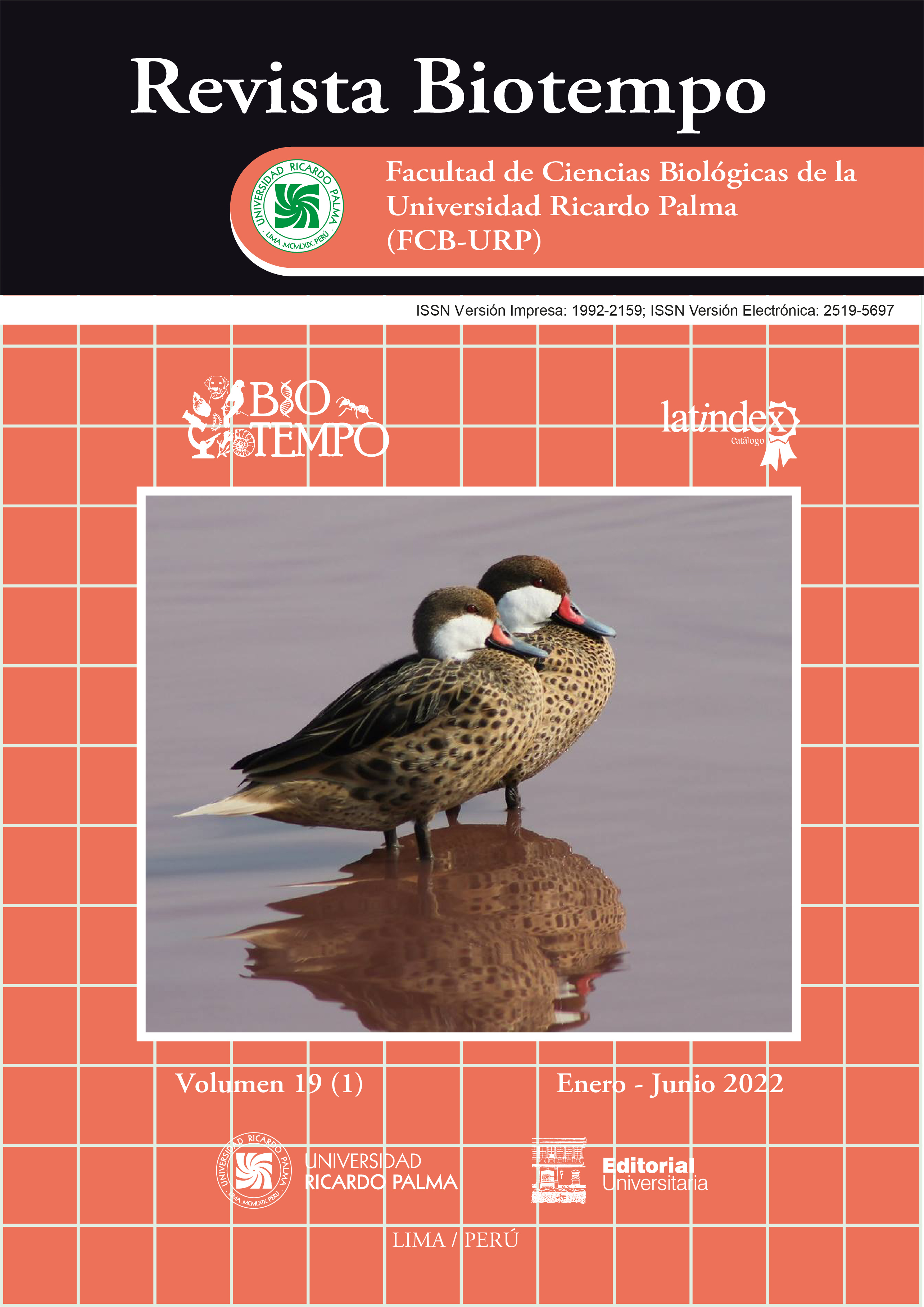DEVELOPMENT OF A MICROBICIDAL AQUEOUS PAINT TO AVOID INFECTATIONS BY CONTACT SURFACES
DOI:
https://doi.org/10.31381/biotempo.v19i1.4764Keywords:
aqueous paint, copper oxide nanoparticles, microbicidal paint, zinc omazideAbstract
This research develops a microbicidal aqueous paint to prevent infections on high-touch surfaces. Based on the experimental tests, two chemical formulations were proposed consisting of an acrylic latex resin, silicone resin, titanium oxide, zinc omazide, copper oxide nanoparticles and additives. Th e results showed that the formulation 2 paint presented good homogenization, gloss and stability, its average drying time is 30 min, it has adequate metal coating thickness (49.2 μm) and viscosity (60 s in Ford No. 4 cup), according to the standards ASTM D 1186 01 and ASTM D 1200, respectively; Based on these characteristics, it is considered to be of acceptable quality. Th e bioassays carried out with bacteria of Staphylococcus aureus Rosenbach, 1884 and Escherichia coli (Escherich, 1885) by the incorporation method, showed that the two formulations have antifungal and antimicrobial properties. n determining the antifungal eff ect of environmental fungi such as Penicillium sp, Aspergillus sp. (fi lamentous fungi) and Rodotorula sp. (yeast) in formulation 1 up to the 1/106 dilution no growth is observed and in formulation 2 it did not grow until the last dilution that was used (1/1010). It is concluded that its use in the painting of high contact surfaces would be effi cient to avoid infections by bacteria suchas S. aureus and E. coli. In the toxicity test of the paint of both formulations, we can say that from 37 ug it inhibits 50% of cell growth, which we can deduce that there is an effect on prokaryotes such as bacteria. It is recommended to continue bioassays to expand their study with other bacteria, fungi and parasites.










